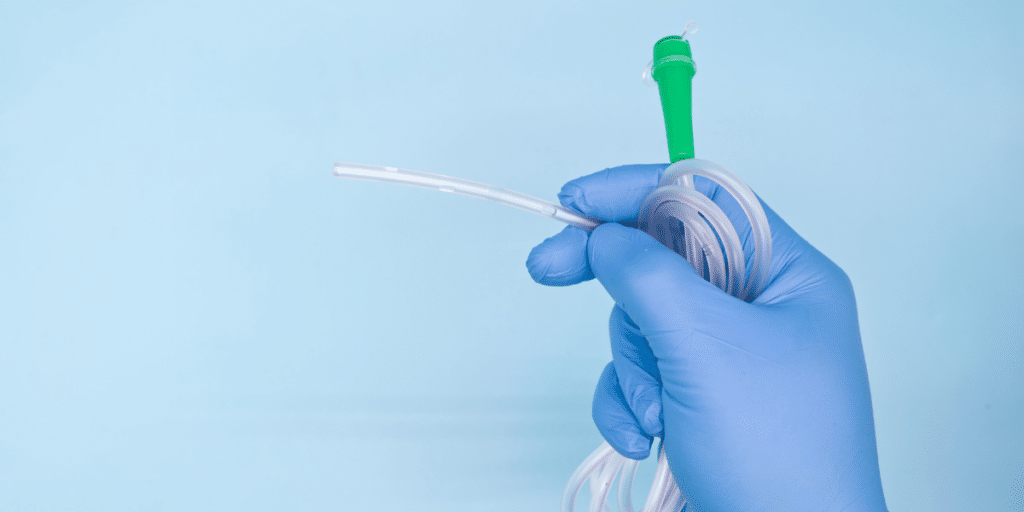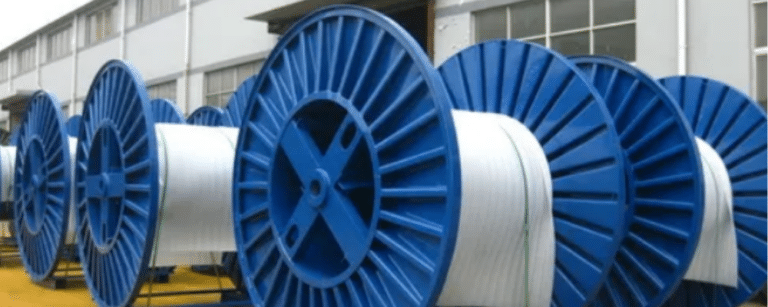What is Crosslinking?
Crosslinking is a process where polymer chains are linked together by chemical bonds, creating a three-dimensional network of interconnected molecules. This modification can significantly alter the physical properties of the polymer material, such as its mechanical strength, thermal stability, and chemical resistance. Crosslinked polymers are often more rigid, durable, and resistant to deformation compared to their non-crosslinked counterparts.
How E-Beam Crosslinking Works – The Science
Radiation crosslinking is a process used to enhance the physical properties of polymers by creating covalent bonds between their molecular chains. This is achieved by exposing the polymer to high-energy radiation: in this case from an E-Beam system. The radiation generates free radicals (ions that are highly reactive/unstable) within the polymer structure, which then react to form crosslinks between the polymer chains, delivering the improved material performance mentioned above.
Notably the dosing required for crosslinking as opposed to other E-Beam applications is generally much higher: typical crosslinking doses range from 50-200kGy.
Industries and Products That Benefit from Crosslinked Materials
Crosslinked materials are used across a variety of industries, including:
- Automotive Industry: Crosslinked polymers are used in tires, gaskets, seals, and hoses due to their enhanced heat resistance and mechanical strength.
- Electronics: Insulating materials for wires and cables benefit from crosslinking, which improves their thermal stability and electrical properties.
- Medical Devices: Crosslinked polymers are used in medical tubing, catheters, and prosthetics, where biocompatibility and mechanical resilience are crucial.
- Construction: Pipes and insulation materials made from crosslinked polyethylene (PEX) are used for their improved durability and resistance to chemical corrosion.
- Packaging: Crosslinked films and foams provide better barrier properties and durability, making them suitable for food packaging and protective wraps.
Performance Comparison of Crosslinked vs. Non-Crosslinked Materials
Crosslinked materials generally outperform non-crosslinked materials in several key areas:
- Mechanical Strength: Crosslinked polymers have higher tensile strength and resistance to abrasion and impact.
- Thermal Stability: These materials can withstand higher temperatures without melting or deforming.
- Chemical Resistance: Crosslinking enhances the material’s resistance to solvents, acids, and other chemicals.
- Durability: Crosslinked materials are less prone to wear and tear, extending the lifespan of the products made from them.
A good example of a crosslinked material is crosslinked polyethylene (PEX). PEX tubing is commonly used to replace copper in plumbing applications and has seen significant growth in recent years (source). The increased performance of PEX is significant when compared to non-crosslinked PE:
| Material Property | Non-crosslinked PE | Crosslinked PEX |
|---|---|---|
| Tensile Strength | 20 MPa | 27MPa (35% increase) |
| Thermal Stability | Withstands up to 80C | Withstands up to 120C (50% increase) |
| Chemical Resistance | Moderate resistance to chemicals, susceptible to degradation by strong acids and bases. | High resistance to a wide range of chemicals, including acids, bases, and organic solvents. |
| Flexural Modulus | 600 MPa | 800 MPa (33% increase) |
| Abrasion Resistance | Moderate | High |
Overview of the Electron Beam Crosslinking Process
Electron beam (E-Beam) crosslinking is a method where polymers are exposed to high-energy electrons. Here’s how the process works:
- Preparation: The polymer material is first extruded or molded into its desired shape. Sometimes a thermal preheat process is used, depending on the nature of the material and the process.
- Irradiation: The shaped polymer is exposed to a controlled beam of high-energy electrons. Sometimes a thermal preheat process is used, depending on the nature of the material and the process.
- Crosslinking: The energy from the electrons breaks chemical bonds within the polymer chains, allowing new crosslinks to form between them.
- Cooling and Finishing: The crosslinked material may be exposed to additional thermal treatment and, if necessary, further processed to achieve the desired final properties.
This method is efficient and allows for precise control over the degree of crosslinking, leading to consistent and high-quality materials.
Determining if Your Product is a Good Candidate for Crosslinking
To determine if your product is a good candidate for crosslinking, consider the following factors:
- Application Requirements: Assess whether your product would benefit from improved mechanical strength, thermal stability, or chemical resistance.
- Material Composition: Not all polymers respond well to crosslinking. Consult with material scientists or suppliers to see if your specific polymer is suitable.
- Cost-Benefit Analysis: Weigh the costs of the crosslinking process against the potential benefits and performance improvements. Typically, radiation crosslinking requires a very high amount of radiation (50-200kGy) – not all irradiation facilities can efficiently crosslink materials.
- Testing and Validation: Conduct tests to validate that crosslinking enhances your product’s performance without compromising other essential properties.
Work with NextBeam
Radiation crosslinking is a technique that can be used to significantly enhance the performance of polymer materials. It’s a technique that is well-understood and refined: detailed process design is best left to a professional materials engineer.
At NextBeam, we have deep experience processing crosslinked materials and are happy to provide information on these processes. Contact us today for a free consultation.
References for Further Learning
For those interested in learning more about Electron beam crosslinking, consider the following resources:
- “Radiation Processing of Polymer Materials and Its Industrial Applications” by Keizo Makuuchi and Song Cheng
- “Polymer Modification: Principles, Techniques, and Applications” edited by Charles E. Carraher Jr.
- Articles in journals such as “Radiation Physics and Chemistry” and “Polymer Engineering and Science.”
- The International Irradiation Association (iiaglobal.com)
Additional Articles We Think You Might Like
Have a question? Speak with a sterilization expert today, at your own convenience.





